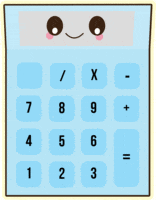High School Functions Tests and Quizzes
Judging from the last round of national assessment scores, this are seems to be the most challenging for students. I plan to expand this area to 10 full tests over the next few months. The only problem we seem to be having with developing these tests is that it is tough to have a great deal of differentiation between question types. Functions were long attached to Algebra in most school curriculum standards. Function display or explain a relationship (of some type) between two data sets. A mathematical function consists of three distinct parts: an input (starting value), the output (the ending value), and the relationship that exists between the values. The goal with functions is most often to understand the relationship that exists between the two data sets. In today’s world there some very high paying jobs for people that can forensically examine and diagnose the relationships that exist between multiple data sets. Being able to assess mathematical systems can help you make highly educated decisions. They can be as simple as determine the best paint color for a wall or as complex as decided to buy shares in company at a specific point of time.
- Sample Test - These are the common questions you see on exams. I made them in short response form to provide a more detailed practice.
- Multiple Choice Questions Form A - I was told that many schools in New York State were using this exact exam as model to work off of.
- Short Response Questions Form B - I did squeeze a lot of different graphs on to this one.
What Will You Find on a Test on Functions?

One of the core centers of this entire curriculum is understanding the difference between a relation and a function. A relation describes a relationship or trend that exists between sets of values. Functions on the other hand are relations that have only one output for every input. The curriculum then steers towards making sense of these math relational trends in a wide variety of situations. We then start to work with other branches of math and see the cross over that exists. A good deal of time is spent determining and calculating the rate of changes that occurs within functions and that can be tracked using data sets and in certain circumstances graphs.
Students then begin to visualize all of these different math relationships on coordinate graphs. After a good amount of time together, my students can spot a value that has been squared, cubed, or derived from a function with a quick glance at the line that it creates. We also explore the nature of exponential and logarithmic growth. Given a spread of data students will be able to make sense of it and understand the value that it generates. We also learn to reverse engineer equations or expressions from the lines that are generated from them. We also learn to attribute value to these functions and sort them by what they can produce. The overall goal for our students is to help them understand the basic anatomy of these math concepts and how to manipulate them to make better and more informed decisions within their own needs.
This topic, at this grade level, also includes a solid base of trigonometry. We now begin to use our understanding of geometric shapes and structures to determining the measure of missing sides and angles. The goal here is to be able to create accurate and actionable modelling to help ourselves and others better understand the information that is available to us.
How Best to Prepare for a Test on Functions
Functions require a deep-rooted level of understanding that requires a little more time than the lower levels of math that you have successfully navigated. The best way to prepare for these types of tests is to start out with a plan. Decide a schedule for when you will study and how you will experience this type of material in the best mode for yourself. This differs greatly based on what works for you. In some cases, it is constantly going over practice problem. In other cases, it is literally writing yourself a test that you think your teacher will put in front of you. For some it is working in a study group and preparing these types of materials for one another and then holding each other accountable for mastering this type of work. How do you best determine which of these methods works for you is trial and error. Make a decision as to which you think would help you the most and give it a try. If the result of your test is where you would want it to be, then maybe that is the way to go. If you flounder and underperform, keep trying new methods until your decide what works best for you. Once you understand how best you learn, create a disciplined approach to recreate this every time and then it is hard to do poorly.